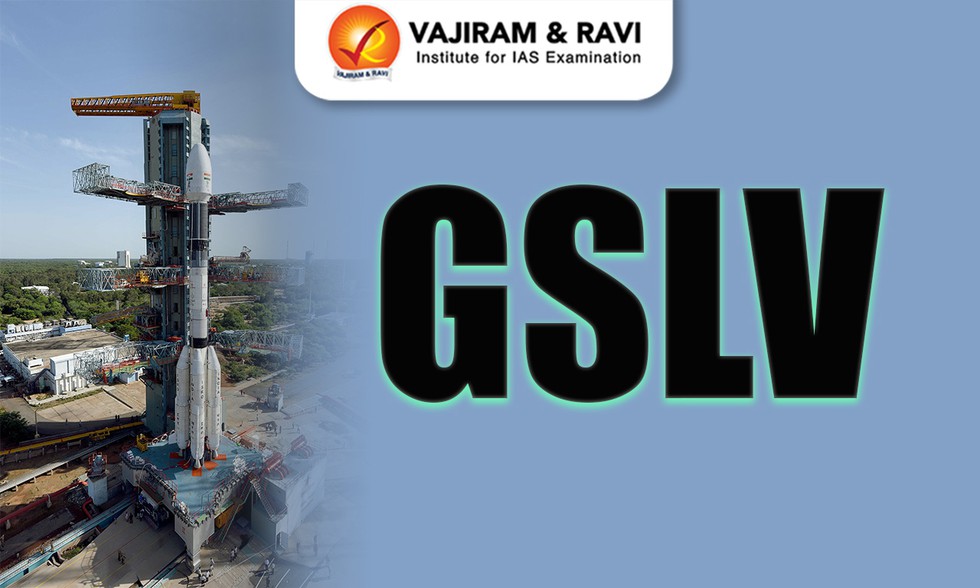About Geosynchronous Satellite Launch Vehicle (GSLV):
- It is a space launch vehicle designed, developed, and operated by the Indian Space Research Organization (ISRO) to launch satellites and other space objects into Geosynchronous Transfer Orbits (GTOs).
- GSLV has the capability to put a heavier payload in orbit than the Polar Satellite Launch Vehicle (PSLV).
- GSLV is 49.13 m tall and the tallest among all other vehicles of ISRO.
- It is a three-stage vehicle with a lift-off mass of 420 tonnes.
- The first stage comprises an S139 solid booster with 138-tonne propellant and four liquid strap-on motors, with 40-tonne propellant.
- The second stage is a liquid engine carrying 40-tonne of liquid propellant.
- The third stage is the indigenously built Cryogenic Upper Stage (CUS) carrying 15-tonne of cryogenic propellants.
- The GSLV improves on the performance of the PSLV (Polar Satellite Launch Vehicle) by the addition of liquid strap-on boosters and a cryogenic upper stage.
- The solid first and liquid second stages are carried over from the PSLV, while the cryogenic upper stage is being supplied by Russia until India has developed an indigenous version.
Variants of GSLV:
- GSLV Mk I:
- The first-generation GSLV with a payload capacity of carrying 2-2.5 ton satellites to GTO.
- It used the Russian-supplied cryogenic upper stage, as it had early difficulty with mastering indigenous cryogenic technology.
- It conducted around 5 flights from 2001-2010, including suborbital tests, with the last launch in 2010.
- GSLV Mk II:
- It is an enhanced variant with an indigenously developed cryogenic upper-stage engine and stage.
- It is capable of carrying payloads to GTO around the 2.5-ton class.
- The first successful launch occurred in 2014.
- GSLV Mk III: The GSLV Mk III, also known as LVM-3, is the most advanced and powerful variant in the GSLV series, currently in service with a payload capacity of up to 4 tons to GTO.
- Performance of GSLV:
- The GSLV has launched various satellites, including communication satellites like INSAT and GSAT, as well as spacecraft from the NavIC and IDRSS series, into GTO.
- Notable missions include the launch of the South Asia Satellite in 2017, a satellite for military applications in 2018, and the Chandrayaan-2 moon mission in 2019.
